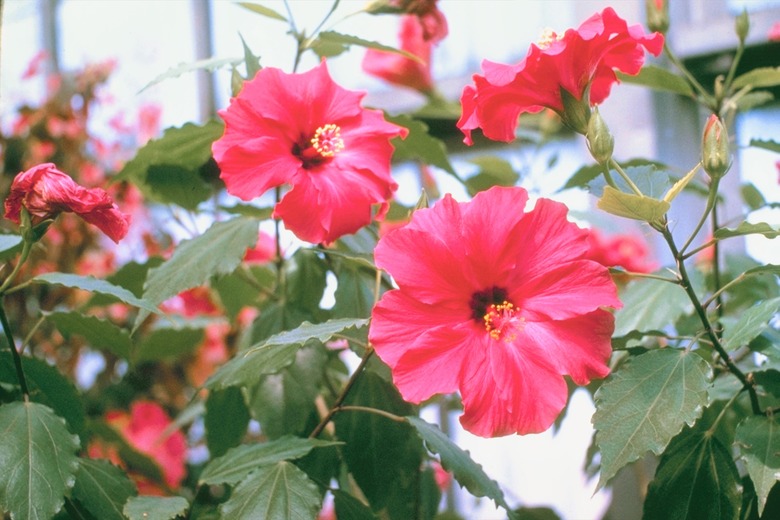How To Get Rid Of Whiteflies On Hibiscus Plants
Whiteflies are the bane of many gardeners and plant lovers. They seem to spread overnight and getting rid of them is no small task. But be encouraged. There are several tips you can apply to get positive results for your hibiscus plants.
Things Needed
- Ivory liquid and bar soap
- Plastic bags
- Hose with sprayer attachment
- Sponge
Whiteflies are the bane of many gardeners and plant lovers. They seem to spread overnight and getting rid of them is no small task. But be encouraged. There are several tips you can apply to get positive results for your hibiscus plants.
Step 1
Identify whiteflies as the problem on your hibiscus. Whiteflies are tiny insects with waxy, yellowish bodies and white wings. They usually congregate on the bottom surfaces of leaves. According to University of California Integrated Pest Management, hibiscus are a host plant for the giant whitefly. This variety is about .19 inch long and has gray mottling on the white wings. They can turn hibiscus leaves yellow and brown quite quickly and leave waxy spirals on the leaves.
- Whiteflies are the bane of many gardeners and plant lovers.
- They can turn hibiscus leaves yellow and brown quite quickly and leave waxy spirals on the leaves.
Step 2
Check to see if you have spiderwebs around your plants. If so, leave them alone. Spiders will eat the whiteflies, but they have no interest in bothering your plant. Some types of ladybugs, including Asian ladybugs, feed on whiteflies on outdoor plants. If you decide to try ladybugs, they can be ordered. Be sure to specify your problem so they will know how best to serve you. Call your local extension office to find out if there are more biological remedies for whiteflies in your area.
- Check to see if you have spiderwebs around your plants.
Step 3
Remove the adults. First, gently remove any badly damaged leaves and discard. Removing leaves is an effective way to eliminate a high number of whiteflies, according to California IPM. Do not leave in them in your bedding area. Close them up in a plastic bag and dispose of them. Use a damp sponge to clean off all the leaves, checking carefully underneath each one. You will need to do this for several days. Remove adults from stems as well. As a backup, after you've used your sponge to remove as many adults as possible, use a forceful sprayer on your hose to wash them off. This process should be done early in the morning so the hot sun doesn't scorch your plants.
- First, gently remove any badly damaged leaves and discard.
- As a backup, after you've used your sponge to remove as many adults as possible, use a forceful sprayer on your hose to wash them off.
Step 4
Carefully spray the entire plant, top side and bottom side with a solution of liquid Ivory soap and water. Leave it for the day. After the sun goes down, repeat the process. You can use a bar of Ivory soap to cover thick stems. The next day, repeat the entire process, beginning with removing adults and spraying off the plant thoroughly, and applying soapy mixture twice.
Step 5
Cut back to once a week on the entire process, after a week of daily treatments. If you still have a problem, you should contact your local nursery to get advice on possible organic products. It might come down to using pesticides, but with daily perseverance you greatly improve your odds against it.
- Carefully spray the entire plant, top side and bottom side with a solution of liquid Ivory soap and water.
- It might come down to using pesticides, but with daily perseverance you greatly improve your odds against it.
Tip
Whiteflies can turn leaves yellow to brown very quickly, and they are difficult to treat because you have to treat every stage of their development. Getting the adults off the plants is only half the battle; you'll also have to treat the egg and nymph stages. Be forewarned, this is not an overnight miracle cure. To the contrary, it will take daily applications over 6 to 8 days. Some insects are repelled by certain types of mulch. Ask your nursery for suggestions.
Warning
Use extreme caution if using chemicals and pesticides. Animals and children should be kept away from the area. While garden variety spiders aren't normally aggressive, do be careful around them. They don't have to be poisonous to bite!
